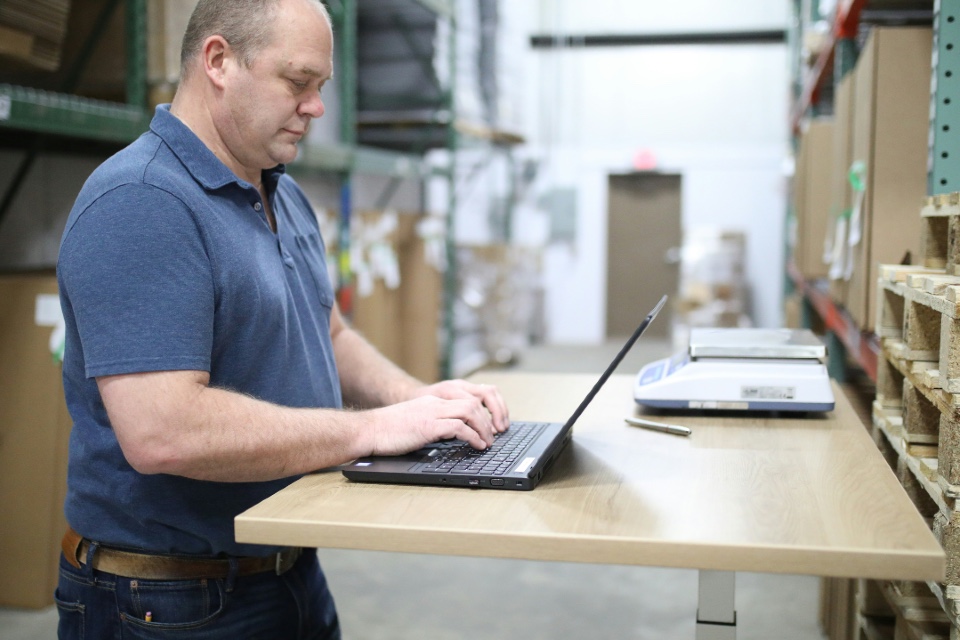A penny saved is a penny earned, but in the highly competitive business landscape, cutting costs isn’t always met with applause. What if businesses could not only save money but also enhance the customer experience through a revamped cost-cutting strategy?
In today’s ever-changing economic climate, savvy businesses nationwide are diving into warehouse efficiencies to slash their Cost Per Pick. This isn’t just about saving dollars; it’s about speeding up processes, reducing errors, and boosting staff morale — all essential components in pursuing profitability.
Peter Allsop, Senior Product Manager at Linnworks, delves into the nitty-gritty of how businesses need to refine picking and packing processes to stand out in the competitive e-commerce arena…
Understanding the Cost Per Pick
For most businesses, the Cost Per Pick is the expense incurred when dispatching someone onto the warehouse floor to pick up an item and prep it for shipping.
While some businesses break down this cost into the Cost of Pick and the Cost of Pack, many see it as an end-to-end cycle: picking items, bagging them, slapping a label on them, and tossing them in the dispatch cage. Though less conspicuous than other business costs (like product acquisition or channel listing fees, shipping, and taxes), these costs add up.
As a business expands, failing to control the Cost Per Pick can significantly surge associated costs. In an inefficient warehouse, where items are picked individually, employees can spend up to five minutes picking each item. For every item picked, the business foots the bill for five minutes of labour. If the warehouse team picks 1,000 items daily, these costs swiftly add up.
Access to this level of analytics motivates stakeholders to strategize on making the business more efficient.
Small Business Growing Pains in the Heart of Entrepreneurial Ventures
Many online businesses scale rapidly from small operations, and the Cost of Pick often slips under the radar as an invisible business expense until it becomes a substantial financial burden. Therefore, the earlier businesses grasp concepts like Cost Per Pick, the better.
Take, for instance, Amazon, an industry giant that started as an online bookstore in a garage. As they scaled, the Cost Per Pick became a significant factor impacting their profitability. Recognizing this, Amazon implemented efficient picking and packing processes early on, ensuring they stayed ahead of the curve.
Moreover, some businesses scale faster than others, leaving owners scrambling to dispatch inventory quickly. However, without implementing an Inventory Management System (IMS) as the business grows, errors may abound when they open their first warehouse.
Warehouse Inefficiencies That Inflate the Cost Per Pick
It’s more than just employee movements that can lead to an inefficient warehouse and an unsustainable Cost Per Pick rate. Technology, or the lack of it, can be a significant factor, and the good news is it doesn’t have to break the bank. While some business owners may consider leveraging e-commerce platforms like eBay to save on costs, it takes little time to recoup the investment if that technology halves the Cost Per Pick.
Amazon, for instance, embraced technology by implementing a ‘pick waves’ system, utilising mobile scanners to guide pickers efficiently. This not only streamlined their processes but also reduced errors and enhanced the overall customer experience.
Businesses incorporating technology usually follow two routes: printing off a physical picklist or using a system called ‘pick waves,’ employing a mobile scanner to guide pickers around the warehouse. If a business is shipping 100 orders a day, this process is far superior to working off invoices, which causes delays, errors, and impacts the customer experience.
Inventory Management Systems are a game-changer when navigating the complexities of juggling orders through different e-commerce channels. The right IMS brings order to every process and helps businesses achieve calm over chaos.
Businesses Should Harness the Power of Platforms
Understanding how platforms can transform legacy processes is key for businesses:
Real-Time Inventory Tracking
Real-time tracking ensures businesses know precisely what’s available, helping them avoid overselling pitfalls and disgruntled customers.
Barcode Scanning
Advanced barcode scanning minimises errors. When a worker picks an item, scanning the product’s barcode immediately alerts them if it’s the wrong item, making it virtually impossible to ship the incorrect product.
Batch Picking and Packing
The best IMS optimises order fulfilment by grouping orders for efficient picking and packing, saving time and reducing errors.
Integration with Shipping Carriers
An advanced IMS with shipping integrations brings serious automation potential. By eliminating errors from manual input processes, businesses can ensure the correct shipping method and labels are applied every time.
Does Reducing the Cost Per Pick Maximise Business Profits?
Reducing the business’s Cost Per Pick is crucial for safeguarding and enhancing profit margins in the heart of the entrepreneurial landscape. By embracing efficient practices, investing in technology, and leveraging smart solutions, businesses can streamline operations, protect profitability, and secure the future of their ventures in the heart of the business landscape.
For small retailers, the strategic use of IMS isn’t just about cost reduction–it’s about thriving and positioning for sustained growth in the competitive world of online retail. Platforms like Linnworks exemplify how early adoption of these principles can drive success in the entrepreneurial landscape, serving as a valuable ally in this journey.
Photo by Adrian Sulyok on Unsplash







